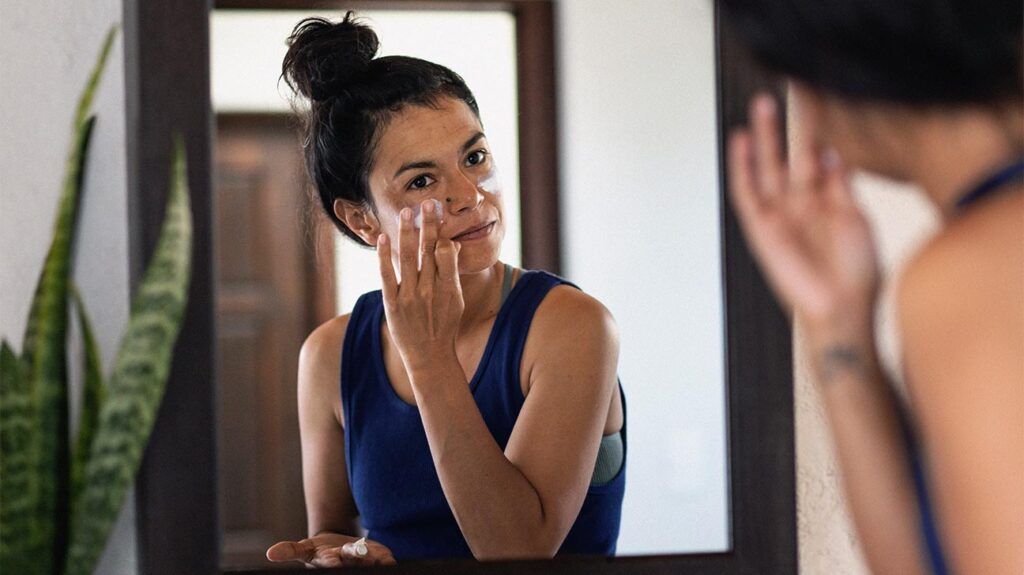Some people with shingles only experience mild symptoms. They may develop a rash, fatigue, headaches, and a low grade fever. Home remedies and over-the-counter (OTC) treatments can help relieve pain and itching.
Shingles, also known as herpes zoster, is a viral infection that occurs due to the reactivation of the varicella-zoster virus (VZV). This is the same virus that causes chickenpox.
After a person has chickenpox, the virus remains dormant in their nerve tissues. In some cases, the virus can reactivate years later, leading to shingles. Shingles symptoms can vary in presentation and severity from person to person.
This article looks at the symptoms of mild shingles and discusses other conditions that share similar symptoms.

Symptoms of shingles can be mild or severe. However, even mild shingles can be uncomfortable.
Some of the symptoms a person may experience
- A rash: This is the hallmark symptom of shingles. It usually appears as a red or discolored band or cluster of small, raised blisters. In mild cases, the rash may involve fewer blisters or a smaller body area compared with severe cases. The rash may also be less painful and heal relatively quickly.
- Pain and tingling: Before the rash appears, many people with shingles experience a tingling or burning sensation in the affected area. Localized pain often follows this sensation. People with mild shingles may only experience slight discomfort or tingling.
- Itching: The rash can cause itching, varying in intensity from mild to moderate.
- Fever: Some people with mild shingles may experience a low grade fever, but this is not always present.
- Fatigue: Mild shingles can cause tiredness or general malaise.
- Headaches: Occasionally, people with shingles experience headaches.
- Sensitivity to light: If the rash occurs near the eye, a person may experience sensitivity to light.
Learn more about shingles.
Several other skin conditions and medical issues can have symptoms that resemble mild shingles.
Some of these include:
- Chickenpox: Varicella-zoster causes both shingles and chickenpox. The initial symptoms,
such as fever and a rash with blisters, can be similar. However, chickenpox tends to be more widespread and typically affects the entire body. - The herpes simplex virus (HSV): HSV can cause oral or genital herpes. These infections
can also present with painful blisters on the skin or mucous membranes. - Dermatitis: Various
types of dermatitis, such as contact dermatitis or eczema, can cause redness or discoloration, itching, and skin irritation. These conditions may not have the characteristic blistering pattern of shingles. - Impetigo: Impetigo is a bacterial skin infection that
can cause red sores or blisters, often around the mouth and nose. Unlike shingles, impetigo does not occur due to a virus. - Allergic reactions: Allergic reactions to substances such as plants, chemicals, or insect bites can result in skin rashes and itching.
Find pictures of shingles and other conditions.
The duration of mild shingles cases can vary from person to person.
The rash and other symptoms of shingles typically last
Even after the rash has healed,
This condition is known as postherpetic neuralgia (PHN), and it can persist for
Treatment for mild shingles primarily focuses on relieving symptoms, accelerating healing, and preventing complications.
Here are some
- Pain management: Pain is a significant symptom of shingles. A doctor may recommend over-the-counter pain relievers such as acetaminophen (Tylenol) or nonsteroidal anti-inflammatory drugs (NSAIDs) such as ibuprofen (Advil, Motrin) to help manage the pain. In some cases, they may prescribe stronger pain medications or topical treatments.
- Topical creams: People can apply topical creams or ointments containing capsaicin or lidocaine to the affected area to help alleviate pain and itching.
- Prescription medications: Sometimes, a doctor
may prescribe additional medications, such as anticonvulsants or tricyclic antidepressants, to help manage persistent nerve pain. - Eye care: If the shingles rash occurs near the eye or on the face, it is best for people to consult an ophthalmologist for proper evaluation and treatment to prevent potential eye complications.
- Antiviral medications: Doctors may prescribe antiviral medications to reduce the duration and severity of shingles. They work by preventing VZV from replicating. Antiviral treatment is most effective when started early. Examples include:
- acyclovir
- valacyclovir
- famciclovir
Read about the best creams for shingles.
People can try doing the following at home alongside medical treatment to help alleviate the symptoms of mild shingles:
- Using cool compresses: Applying cool, damp compresses to the rash can relieve itching and discomfort.
- Applying calamine lotion: This type of lotion can help soothe itching.
- Keeping the rash clean: Gently cleaning the rash with mild soap and water can help prevent infection. However, it is important to avoid scrubbing or picking at the blisters, as this can worsen the condition.
- Resting and staying hydrated: Getting plenty of rest and staying well-hydrated can support the body’s immune response and healing process.
- Avoiding triggers: Identifying and avoiding triggers that may exacerbate symptoms, such as stress or certain foods, can help manage the condition.
Read more about home remedies for shingles.
Mild shingles may cause fewer or less severe symptoms than other cases. However, people with mild shingles may still have a painful, itchy rash and feel tired or experience headaches.
Symptoms people experience with shingles may also occur due to other conditions, such as impetigo, eczema, chickenpox, and allergic reactions.
Home remedies and OTC treatments can help relieve discomfort due to shingles. Most cases clear in 2–4 weeks.
